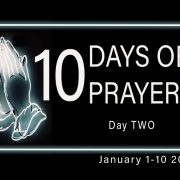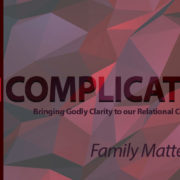#442 See Yourself Here Series 5, Come And See
#442 See Yourself Here Series 5, Come and See
By: Zach Sloane
(Sermon notes & PowerPoint links at the bottom of the page)
Recap: See Yourself Here – John 1:23:51
See. See Yourself. See Yourself Here.
We’ve looked at vision and obstacles to it.
The necessity of seeing Jesus and what we do see when we look at him.
Seeing yourself as one who is in union with Christ, something we realize when we let what he sees about us become what we see about ourselves.
That Jesus is highly relational, and that Christianity is not primarily a belief system but a belong system.
Intro:
Come and See. INVITE! Inviting people to come and experience Him for themselves.
John 1:35-39
Again, the next day, John stood with two of his disciples. And looking at Jesus as He walked, he said, “Behold the Lamb of God!” The two disciples heard him speak, and they followed Jesus. Then Jesus turned, and seeing them following, said to them, “What do you seek?” They said to Him, “Rabbi” (which is to say, when translated, Teacher), “where are You staying?” He said to them, “Come and see.” They came and saw where He was staying, and remained with Him that day (now it was about the tenth hour).
Invite is one of the verbs we value. There are three big ideas that I think when we wrap our heads around, inviting people becomes easy and natural.
- Being excited about Jesus is ok! Its normal!
- Sometimes we rightly focus on leading people to Jesus, but can overlook the fact that often, the first step is letting Jesus lead people to us.
- An invite culture is more about including people than it is about informing
Come and See
- Being excited about Jesus is ok! Its normal!
John 1:40-46
He [Andrew] first found his own brother Simon, and said to him, “We have found the Messiah” (which is translated, the Christ). And he brought him to Jesus… The following day Jesus wanted to go to Galilee, and He found Philip and said to him, “Follow Me…” Philip found Nathanael and said to him, “We have found Him…” “Come and see.”
Luke 2:17
“After seeing him, the shepherds told everyone…”
Those shepherds, all they saw was a baby in a manager, but by the eyes of faith they were excited about what they saw.
The woman at the well. Jesus impacted her so much that:
John 4:28-29
“…left her water jar beside the well and ran back to the village, telling everyone, ‘Come and see a man who told me everything I ever did! Could he possibly be the Messiah?ʼ”
This is the normal reaction of people who have been touched by Jesus; you know that you and your life are not the same… you want to share that news.
Rick Joyner
“…the most powerful evangelistic force in the world is an encouraged Church. When the Church is encouraged, individual Believers share their faith with their friends and relatives, and that is the most effective evangelism that exists, by far.”[1]
Give yourself permission to be exited, to be faith-filled, hopeful!
1 Peter 3:15
But in your hearts revere Christ as Lord. Always be prepared to give an answer to everyone who asks you to give the reason for the hope that you have. But do this with gentleness and respect,
- Sometimes we rightly focus on leading people to Jesus, but can overlook the fact that often, the first step is letting Jesus lead people to us.
Most of us don’t meet a stranger in the grocery store who is so ready and willing for me to tell them the whole Gospel, at which point they fall over, repeat the sinners prayer, and come to Bible study the next day. That does happen but it’s the exception, not the rule.
John Finney, a writer on mission and church growth, in his work “Finding Faith Today: How Does it Happen,” gives an outline of the typical way that most people today in our day and age end up coming to faith.[2]
- They are first introduced to the church through a family member, a friend, a colleague, or a Christian friend.
- They come, they ask questions, they listen, they pick things up from being a part of the community.
- They are at some point invited to explore things intentionally in a little deeper way; to arrive at some specific knowledge, usually through a group or some sort of program, mentorship, or discipleship.
- They then come to discover that they have in fact become a Christian and then take a formal step such as baptism.
Pastor Karl spoke about how Christianity really isn’t a belief system, its a belong system. That’s not to say what we believe is not important, it really really is, but what we believe is best communicated and expressed in community more than it is in a belief statement.
2 Corinthians 3:2-3 (NKJV)
“You yourselves are our letter, written on our hearts, known and read by everyone. 3 You show that you are a letter from Christ, the result of our ministry, written not with ink but with the Spirit of the living God, not on tablets of stone but on tablets of human hearts.”
We as the church embody a message. We carry it within us and we model it, reveal it, and communicate the message in our lives and the way that we connect with one another.
John 14:6 (NIV)
Jesus answered, “I am the way and the truth and the life. No one comes to the Father except through me.
Jesus Christ is the truth, but where can we find Him?
1 Timothy 3:15 (NLT)
“… so that if I am delayed, you will know how people must conduct themselves in the household of God. This is the church of the living God, which is the pillar and foundation of the truth.”
The church is where mutual strengthening, life-giving relationships and connection are made and it’s in these relationships that people learn, encounter, and experience Mr. Truth, Jesus.
- An invite culture is more about including people than it is informing
This was Jesus’s way. He could have answered their questions, given them cold hard facts, details, inspiring anecdotes, but he didn’t. He included them in a process that would help and empower them to come to their own conclusions. He invited them to “Come and See.”
So what does that look like?
It means that we do things like invite people to join us in the things that we do. We don’t have an “us verses them mentality.” There are no longer insiders verses outsiders.
2 Corinthians 5:14-16
For Christ’s love compels us, because we are convinced that one died for all, and therefore all died. 15 And he died for all, that those who live should no longer live for themselves but for him who died for them and was raised again. 16 So from now on we regard no one from a worldly point of view. Though we once regarded Christ in this way, we do so no longer.
Not advocating for universalism in the sense that no one needs to accept Jesus, we do. But we do recognize the universality of what Jesus did. He died for all. He has forgiven all, he accepts all, he loves all, and because of this, all belong and all are welcome, and all need to be invited in.
Inviting people really does have a lot to do with how you see church.
If church is for you that place where you encounter the presence of an Almighty and All-Loving God, church is the place where you have made relationships an connections with people that give you strength and make your life better, if church is the place where you are built up in the most holy faith, and it is a life changing experience for you… then ya, you want to include others.
The barriers to people’s inclusion have been removed by Jesus.
Galatians 2:14-18
14 For Christ himself has brought peace to us. He united Jews and Gentiles into one people when, in his own body on the cross, he broke down the wall of hostility that separated us. 15 He did this by ending the system of law with its commandments and regulations. He made peace between Jews and Gentiles by creating in himself one new people from the two groups. 16 Together as one body, Christ reconciled both groups to God by means of his death on the cross, and our hostility toward each other was put to death. 17 He brought this Good News of peace to you Gentiles who were far away from him, and peace to the Jews who were near. 18 Now all of us can come to the Father through the same Holy Spirit because of what Christ has done for us.
When we include people, invite them and include them in our community life and practice before informing them, our choice to show love and acceptance speaks a far more informative and powerful message than any pre-conditioned belief statement or behavioural expectation ever could.
Remember again the Samaritan woman at the well who went and told everyone about her experience with Jesus.
John 4:39-42
And many of the Samaritans of that city believed in Him because of the word of the woman who testified, “He told me all that I ever did.” So when the Samaritans had come to Him, they urged Him to stay with them; and He stayed there two days. And many more believed because of His own word. Then they said to the woman, “Now we believe, not because of what you said, for we ourselves have heard Him and we know that this is indeed the Christ, the Savior of the world.”
N.B. They believed, not because of what she said, but because they got to see and hear and experience him for themselves. Their own experience led them to know that he was the Christ, the Saviour of the world.
Not saying what we say, or doctrine, or behaviour doesn’t matter, but first we need to include people with no conditions, let them know they belong.
Invite – and then once they show up, treat them well. Let them know they belong, no strings attached. Truth flourishes in an environment of freedom, freedom to be and to belong, and when it is experienced first hand.
Summary – COME AND SEE
- People who encounter Jesus want to go tell everyone about him so they can come see him for themselves. Being excited about Jesus is ok!
- Sometimes we rightly focus on leading people to Jesus but can overlook that fact that the first step is often letting Jesus lead people to us.
- An invite culture is more about including people than it is about informing people.
[1]Rick Joyner, “The History and Future of the Present Revival – Tighten Your Seatbelts. We Are in For the Ride of Our Lives!” http://www.elijahlist.com/words/display_word/6670
[2] George G. Hunter III, The Celtic Way of Evangelis,m
See Yourself Here Series 5, Come and See, Sermon notes to print, PDF
See Yourself Here Series 5, Come and See, PowerPoint Slides, PDF
Podcast: Play in new window | Download











Leave a Reply
Want to join the discussion?Feel free to contribute!